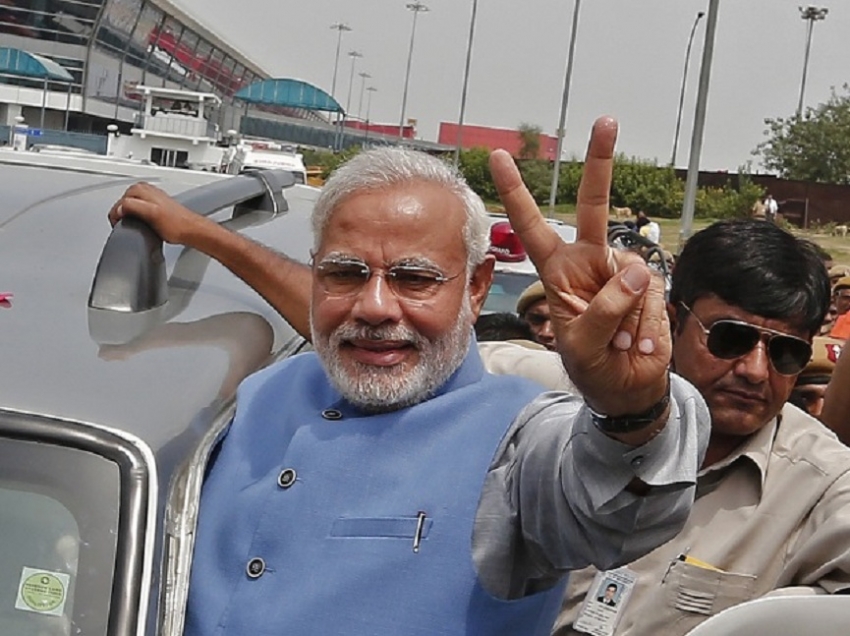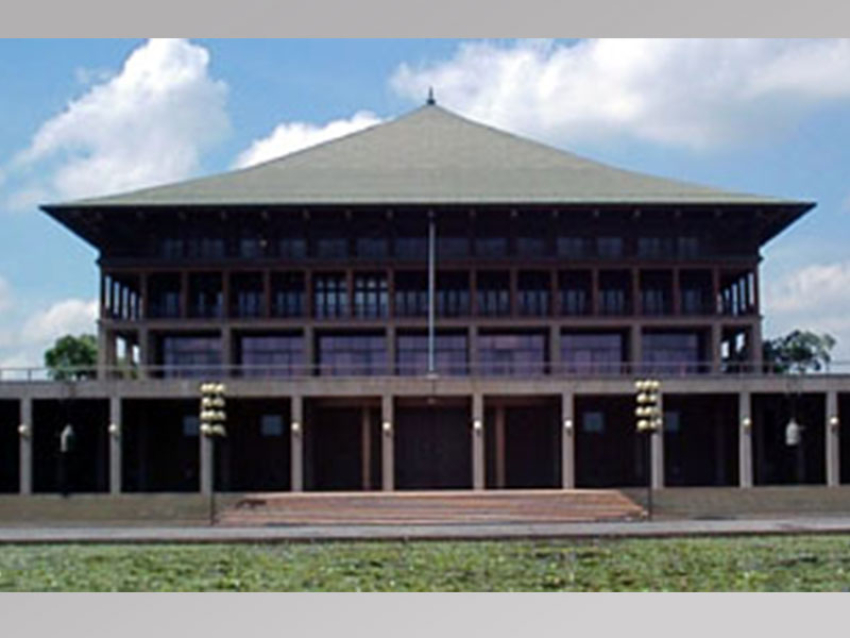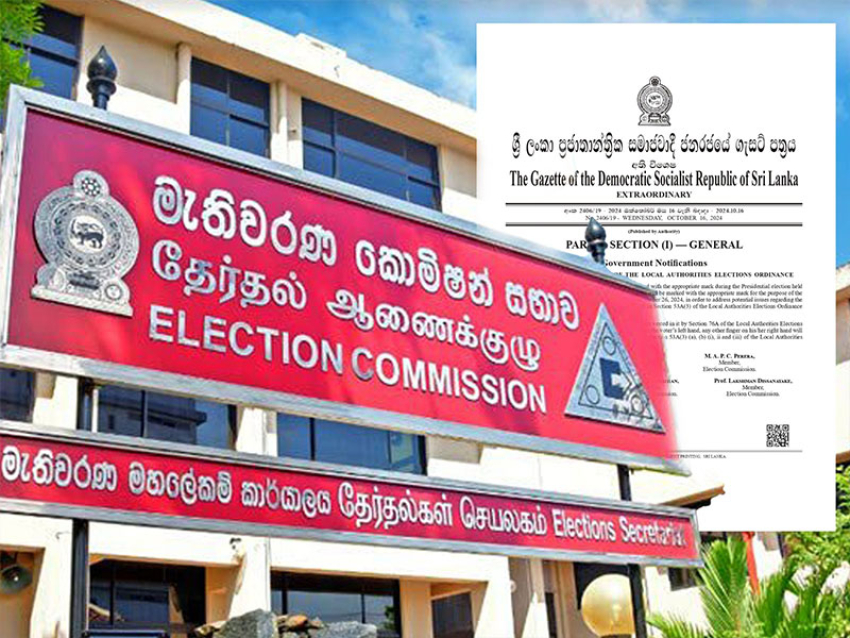With the count on the Indian Lok Sabha polls beginning, the early results show the governing Bharatiya Janata Party (BJP) led by Prime Minister Narendra Modi coming back to power, with a larger majority and dominating Indian politics. The early results confirm the Exit Polls results from the time the seven-phase poll ended on May 19, giving the BJP led by Modi over 300 seats in the Lok Sabha, bringing back Prime Minister Narendra Modi to the office of Prime Minister with greater electoral strength than his victory in 2014.
The emerging results show that Prime Minister Modi and the BJP have the support of a majority of Indian voters across the country, and exposed the flaws in the many opinion polls and media reports of the success of the opposition to the BJP and Narendra Modi, by the alliance led by the Congress.
Prime Minister Narendra Modi has declared victory being on course to win a second term in a landslide, early results show.
Congress President Rahul Gandhi conceded defeat to Narendra Modi and congratulated the Prime Minister on his win. He said: “The public has clearly given its decision. I had said clearly during the campaign that the public is the master and the master has given the order and direction. First of all, I would like to congratulate Narendra Modi and the BJP… Our fight is a fight of ideologies. These are two different ideologies. One is of Narendra Modi and the BJP and the other is of the Congress Party. But we will have to accept that in this election, Narendra Modi and BJP have won. I would like to give them my heartiest congratulations.”
Results showed that Gandhi lost his family constituency of Amethi in Uttar Pradesh, which is considered the home constituency of the Gandhi-Nehru political dynasty. In the 2014 elections, Gandhi won the seat by a margin of more than 100,000 votes.
However, he is contesting from a second seat in Kerala's Wayanad and is leading in that seat, and will likely return as an MP to the Lok Sabha from Kerala, a major change in the politics of the Congress Party and the Gandhi-Nehru dynasty.
The Congress has not been successful in gaining majorities even in the several States that it and its allies defeated the BJP in State Assembly polls held last year. The results so far indicate that while there was State-level opposition to the BJP, overall nation-wide support for Narendra Modi and the BJP has remained, and even grown larger.
The largest and most expensive election, in what was the largest democratic election in the world, had more than 900 million voters, choosing members for India’s lower house of parliament – the Lok Sabha. The contest saw more than 600 parties and 8,000 candidates seeking election to the 543 seats in the Lok Sabha. A party or a coalition needs 272 MPs to form a government.
The emerging result is seen as a successful referendum on Narendra Modi and the BJP, with more attraction for Modi, who is seen as a polarising figure in current Indian politics.
The results so far also show the defeat of the Congress Party with its leadership under Rahul Gandhi, and as many analysts see it, the inevitable decline in the Congress Party in the politics of India, which it dominated in the initial decades since independence from British rule in 1947. It is also seen as the failure of the dynastic politics of the Rahul Gandhi family, whose father and mother, late Rajiv Gandhi was Prime Minister until assassinated, and Sonia Gandhi – were strong party leaders, as were whose grandmother Indira Gandhi (also assassinated) was a powerful prime minister, and his great grandfather Pundit Jawaharlal Nehru was the first Prime Minister of independent India.
Political analysts see the emerging Narendra Modi victory as a combination of caste coalitions, and the impact of material developments –such as roads, toilets and cooking gas supplies etc., as well as the rising Hindu extremist policies of Narendra Modi and the BJP.
Although the Congress Party had a programme of major economic and financial development for the agricultural sector and a rise in employment facilities to the expanding youth population, this could not beat the material benefits and welfare schemes given by the Modi-led BJP government, and the very strong and vocal pro-Hindu policies.
The wider recognition of a BJP-Modi victory was seen in the Mumbai Stock Exchange hitting an all-time high with the news that the BJP would be swept back to power.
US-China Trade War
The rising trade war with China by the US, seen by the increase in tariffs on $ 200 million worth of Chinese exports – increased from 10% to 25% - after trade talks between the US and China broke off recently, shows more trade tensions between the two countries.
China has in retaliation raised tariffs on $60 billion in US goods, affecting more than 5,000 products to as high as 25%. The confrontation between the world’s two largest economies shows a widening conflict which will have an impact on larger international trade.
The situation has escalated with the US imposing major restrictions on the Chinese internet and telecommunications manufacturer Huawei, one of the largest telecom producers in the world. The US Commerce Department has put Huawei on its Entity List, meaning U.S. companies would need to obtain licenses to sell it critical components for its products and that could make it hard for Huawei to get the parts it needs.
This led to leading internet and digital servers such as Google to cut off support to Huawei, and this trend is spreading to other large international companies too, with increasing threats to the profitability of Huawei. Several global telecom companies are also announcing a suspension of trade ties with Huawei. Google’s announcement was a result of a Trump administration order effectively barring American firms from selling components and software to Huawei, ramping up a cold war between the two countries over technology and trade.
This is seen by two of Britain’s biggest mobile networks, EE and Vodafone, announcing they would stop offering Huawei phones to 5G customers as a result of Google’s decision.
In Japan, the three largest cellphone companies also said they were reconsidering plans to sell a new series of Huawei smartphones.
Further, ARM, among the largest chip makers based in Britain, is reportedly suspending its business with Huawei, because some of its designs contained technology from the United States. ARM said it was “complying with all of the latest regulations set forth by the U.S. government” and declined to comment any further.
Economics analysts say that China has plenty of ways to get back at the US for the treatment of Huawei, a company that is an image of the growing Chinese economy, and the tariffs imposed on Chinese goods. They see that China could retaliate against the U.S. by making life more difficult for U.S. companies doing business in China and that China has encouraged consumer boycotts in the past and used inspections and regulatory moves against imported goods.
China could also limit purchases of U.S. “Treasurys” or selling them or weakening its currency. The biggest holder of U.S. Treasurys, China, recently reduced its holdings to the lowest level in two years.
The US-China Trade War is seen by many as part of the political campaigning by US President Donald Trump for the coming Presidential Election in 2020. In the 2016 campaign, when he was elected, Donald Trump was strongly critical of China’s economic policies vis-à-vis the US. The situation today is that the position as gone beyond political or electoral rhetoric and is drawing the rest of the world too into the rising confrontation between the two economic giants of the world.
Alarms on US - Iran tensions
Democratic US politicians have expressed scepticism and alarm after receiving closed-door briefings from key Trump administration officials this week about escalating tensions with Iran.
The briefings were given by Secretary of State Mike Pompeo, acting Secretary of Defence Patrick Shanahan, Chairman of Joint Chiefs General Joseph Dunford and an official from the US Defense Intelligence Agency.
After a lengthy briefing and political argument with the key personnel, the Democrat Chairman of the House Armed Services Committee Adam Smith said there wasn’t enough information on what Iran has done at this stage. They sought more clarity on the US policy going forward on Iran.
It is the view of several Democratic representatives that the US administration keeps heightening tensions with Iran, and leaving out the realities of the situation.
The US has recently increased US military presence in the Gulf; in response to what it claims are threats from Iran. The confrontation with Iran worsened when President Trump tweeted last week that, “if Iran wants to fight, that will be the official end of Iran” and added, “never threaten the United States again”.
Iranian Foreign Minister Javad Zarif responded stating the US is "playing a dangerous game", warning that "having all these military assets in a small area is in itself prone to accidents.”
While Democrat Representatives were critical and concerned about the Trump policies on Iran, Republican Representatives defended Trump’s moves as necessary, while tamping down talk of a direct military confrontation with Iran, or even a war.
There is increased international concern about the US confrontation against Iran worsening and moving to a major crisis affecting the peace in the Gulf Region, and also negatively affecting the international economies.
l The European Union goes to the poll from May 23, in a rising clash between anti-federal political leaders and the pro-federal EU unity leaders, which is expected to see a major clash in political thinking on the core values of the EU. The biggest clash will be in France where President Macron pro-EU and federal strategy is strongly opposed by Marine Le Pen – the main rival he defeated in the presidential race.




















